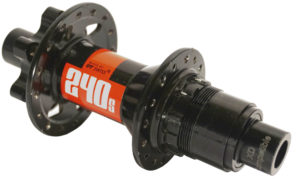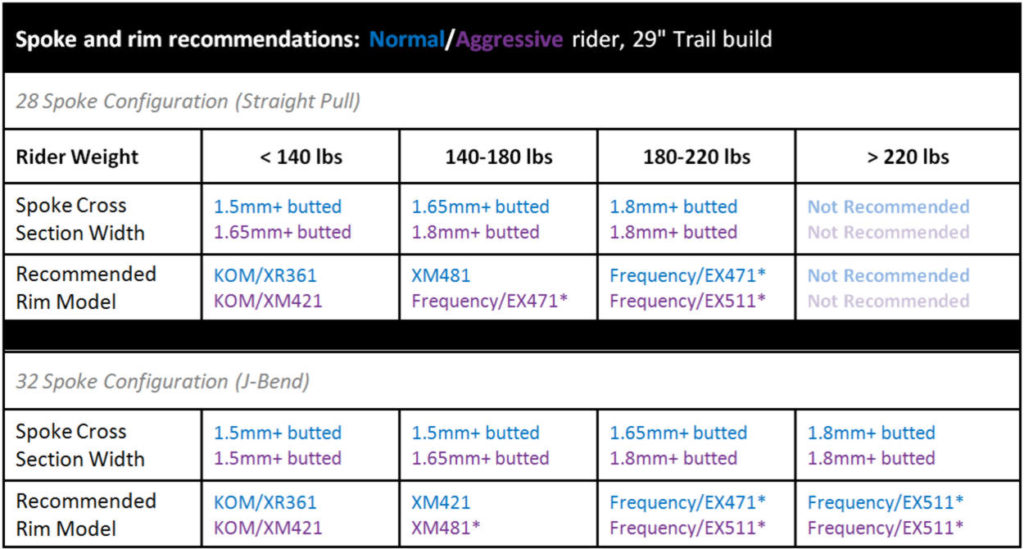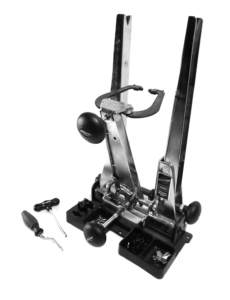Which wheel set is right for me? Every wheel configuration that we list on our site is built with the best components for a given use case. Simply enter the rider’s weight, preferred style and terrain into our system and it will list the builds that best fit your needs. These builds offer a great balance between weight and durability for a given rider, however you can customize any of these builds if desired.
What if I want a wheel built with parts that you don’t stock? No problem. We will source the parts necessary to build the wheels of your dreams. Simply choose the “Custom” option from the part drop-down and write in your desired part description. A quote will be generated for you once we determine the cost to obtain the specified components. Alternatively, if you have the components on hand, choose the “Customer supplied” option and detailed shipping instructions will be included in your receipt upon checkout.

Can I get a wheel set built with hubs from my old wheels? Quality hubs can last a lifetime. If your hubs are in good shape we would be happy to build up a new set of wheels around them.
What is the best rim for my type of riding? The rim of a wheel plays a large role in determining its handling characteristics, stiffness and ability to withstand impacts. The variety of rim materials, widths and brands can sometimes make choosing the “right” rim a difficult task. If you regularly dent or need to replace rims on your current wheels then we would suggest a thicker alloy rim. If you are a lighter rider, however, and aren’t afraid of the increased cost it is hard to argue against carbon as a material. Rim width is another polarizing topic. Wider rims have the added benefit of increasing the tire volume and decreasing the probability of casing roll at the expense of added weight. We recommend 25-30mm internal width rims for most Trail/AM applications where a 2.3-2.5 inch tire is ideal. Many popular XC tires in the 2.0-2.25 range may loose their round shape on wider rims and therefore a rim in the 19-25mm internal width range is best. Use our custom build tool to get an idea of what rims might best suit your needs
Component selection
Not sure which components best suit your needs? We can help. A wheels rim and spokes make the greatest contribution to its overall strength, stiffness and durability. Therefore, it is important to choose the rim and spoke combination to fit your riding style and environment.
Take a look at the chart below for a quick overview of our recommendations

Rim selection
For most riders, an alloy rim such as the WTB KOM offers an excellent balance between durability and low weight, both important considerations for Cross Country riding. We offer the KOM in both 23 and 25mm internal width variants. The wider 25mm width increases the weight and lateral stiffness of the rim and provides a better platform for wider 2.3-2.5″ tires. If you are a heavier rider (190 lbs+), or have a particularly aggressive riding style with a predilection towards charging through rough and uneven terrain, the DT XM series rims will further increase stiffness and durability. Please see the table below for more information.
Spoke Cross Section Width
We offer J-bend 32 and Straight-pull 28 spoke configurations for each of our builds. Using a spoke with a greater cross section width will result in a stiffer wheel. We recommended double butted spokes for their increased fatigue life when compared against straight gauge spokes. Below you can find a breakdown of recommended spokes and their cross section widths.
Sapim Leader and DT Champion: 2.0 Straight Gauge (14 gauge)
Sapim Race and DT Competition: 2.0-1.8mm Double butted (15 gauge)
Sapim D-Light and DT Competition Race: 2.0-1.65 mm Double butted (~16 gauge)
Sapim Laser/CX-Ray and DT Revolution/Aero: 2.0-1.5mm Double butted (17 gauge)
Recommended spoke brand, type, and count: DT Swiss and Sapim both produce reliable high quality spokes in a variety of types and gauges. Our recommended builds include 32 double butted J-bend spokes on both front and rear wheels. This configuration is ideal for mountain bikes for a number of reasons: First, a higher spoke count (vs. 28 or 24 spoke wheels) has the advantage of added redundancy in the event of a broken spoke, increases wheel stiffness, provides better load distribution, and reduces fatigue to individual components. When compared to straight-pull spokes, replacement J-bend spokes tend to be easier to source and less expensive. Butted spokes offer a better fatigue life versus straight-gauge spokes, almost eliminating the chance of a failure at the spoke head or bend (the most common point of failure) and have the added benefit of reducing spoke weight. Wheels that feature low spoke counts and straight-pull spokes are great for big wheel manufacturers and have become fashionable, but these traits come at the expense of overall wheel durability.
Recommended Rim Models
The above chart provides basic rim selection guidelines for the average rider’s trail use. These recommendations are not meant to be absolute, but instead provide an idea of how to potentially scale the rim model to the riders weight and riding style.
WTB KOM i23/ i25 and DT Swiss XR361: i23/i25 designates internal width of 23mm and 25mm. The XR361 (22.5mm internal, 390g) is roughly 30 grams lighter than the i23 and considered a XC specific rim.
DT Swiss XM 421/481: DT’s XM line rim are trail specific with 25mm and 30mm internal width and 440g and 490g weight respectively.
WTB Frequency i25/i29: WTB’s classic Frequency rim is rated for both trail and gravity use and features a 25/29mm internal width and 527/542g weight respectively.
DT Swiss EX 471/511: The ‘E’ in EX stands for Enduro. Often used as a lightweight DH rim, the 471 and 511 models have a 25mm and 30mm internal width and weigh between 500 and 535g.
Still not sure which components would be best? Feel free to contact us and we will help you spec the perfect build.
Why we choose to build with DT Swiss hubs: We favor DT Swiss hubs for our builds due to their proven reliability and simple user-serviceable design. The ratchet mechanism found in DT swiss 350/240s rear hubs is extremely resilient and tends to fair better than many pawl type freehubs based on our experience. We do not suggest trying to save money by buying cheap hubs. Rear hubs in particular take a good deal of abuse and are a constant point of failure on cheaper wheel sets. Switching to a more reliable hub requires rebuilding the entire wheel and is a costly procedure. Other brands such as Chris King, Industry Nine, and Hope are known for reliable high-quality hubs.
Wheel Building

What does it take to build a wheel? Patience. With enough practice anyone should be able to build a strong and reliable wheel. You don’t have to be a professional bike mechanic to take pride in a set of wheels built with your own hands. That said, it is much easier to acquire the requisite knowledge and skill by first learning how to true and service wheels
before committing to building a set from scratch. It is important to note that improperly built or serviced wheels carry a high risk of failure and therefore we would advise any prospective builders to take a course and get some valuable insight from the experts before you start on your own.
Where can I learn more about wheel building?
We recommend reading into the process before seriously considering building a set of wheels. There are free online resources such as…
Sheldon Brown’s wheel building guide and Mike T’s wheel building guide
Also available in print is Gerd Schraner’s “The Art of Wheelbuilding“
Finally, I would highly recommend looking into local community organizations such as Community Cycles


